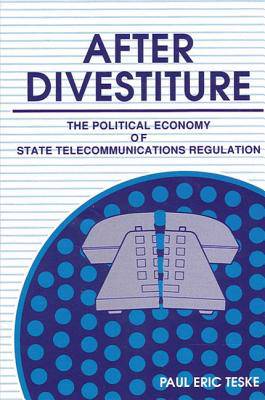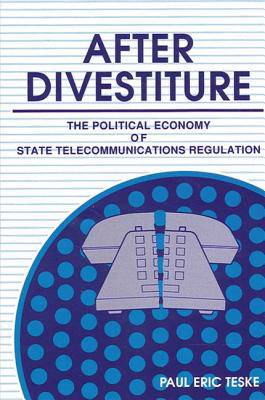
Bedankt voor het vertrouwen het afgelopen jaar! Om jou te bedanken bieden we GRATIS verzending (in België) aan op alles gedurende de hele maand januari.
- Afhalen na 1 uur in een winkel met voorraad
- Gratis thuislevering in België
- Ruim aanbod met 7 miljoen producten
Bedankt voor het vertrouwen het afgelopen jaar! Om jou te bedanken bieden we GRATIS verzending (in België) aan op alles gedurende de hele maand januari.
- Afhalen na 1 uur in een winkel met voorraad
- Gratis thuislevering in België
- Ruim aanbod met 7 miljoen producten
Zoeken
€ 145,45
+ 290 punten
Uitvoering
Omschrijving
This book analyzes the politics of state regulatory decision-making in telecommunications after the AT&T divestiture in 1984. The author takes a political-economy approach that explains how interest groups and institutional factors have shaped different state policies. He shows that the structure and composition of state regulatory institutions have important effects on pricing and competition in the telecommunications industry. The innovative methodology of this work combines qualitative empirical analysis from the entire U.S. with case studies of eight states. It identifies the deregulation winners and losers by examining the impact of changes in local and long-distance price structures on different groups, including users of telecommunications services, small businesses, residential consumers, and rural residents. The book includes recommendations for improving state policy.
Specificaties
Betrokkenen
- Auteur(s):
- Uitgeverij:
Inhoud
- Aantal bladzijden:
- 162
- Taal:
- Engels
- Reeks:
Eigenschappen
- Productcode (EAN):
- 9780791403235
- Verschijningsdatum:
- 5/07/1990
- Uitvoering:
- Hardcover
- Formaat:
- Genaaid
- Gewicht:
- 408 g

Alleen bij Standaard Boekhandel
+ 290 punten op je klantenkaart van Standaard Boekhandel
Beoordelingen
We publiceren alleen reviews die voldoen aan de voorwaarden voor reviews. Bekijk onze voorwaarden voor reviews.












